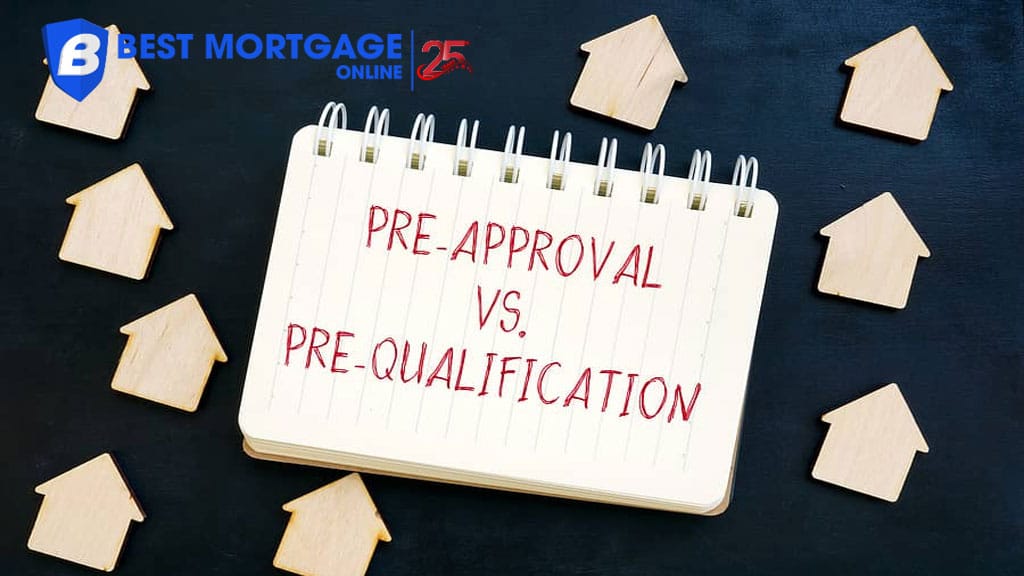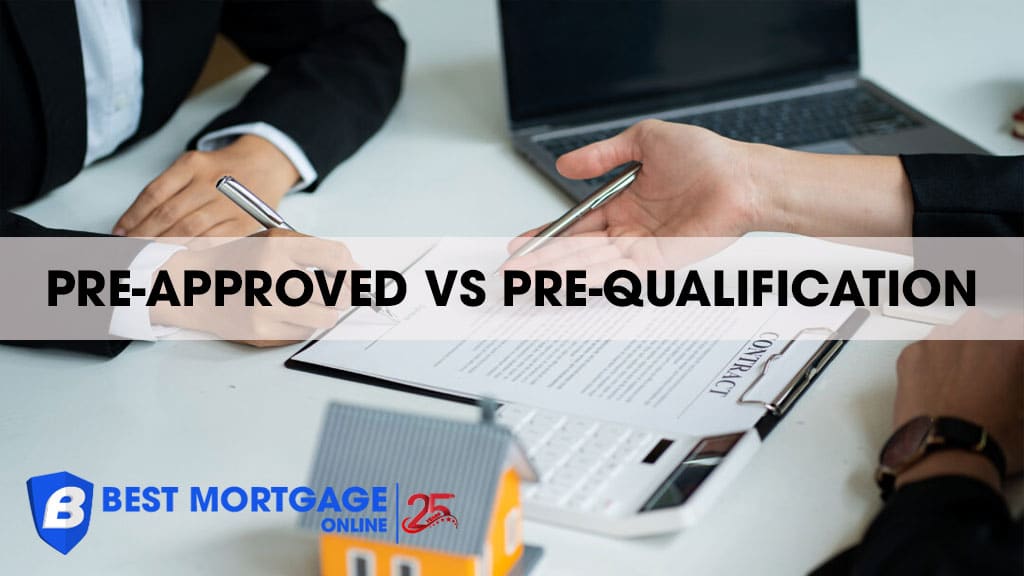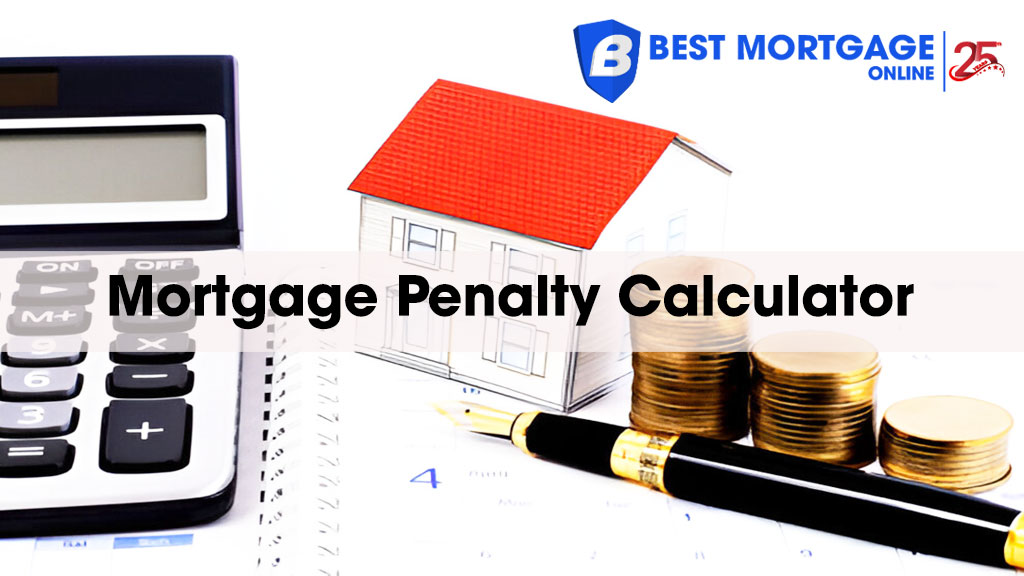Getting pre-approved or pre-qualified for a mortgage is one of the first major steps when buying a home. However, most buyers struggle to understand each route’s crucial differences and benefits. Without clarity on these mortgage fundamentals early on, your dreams of homeownership could be severely impacted.
This guide provides an overview of mortgage pre-approval vs pre-qualification in Canada, empowering you to strategically position your journey for a smooth approval and maximize your mortgage borrowing potential.
Are Mortgage Pre-Approval and Pre-Qualification the same in Canada?

While lenders and buyers often use pre-qualification and pre-approval interchangeably, there are notable differences between the two processes.
What is mortgage pre-qualification?
Pre-qualification provides an initial estimate of the maximum mortgage amount you may qualify for. It’s a very casual calculation, usually verbal. With pre-qualification, you provide basic details on your finances to a lender, such as your annual income, employment details, current debts, and assets. This usually only takes a few minutes and can be done online, over the phone or in person.
Be prepared to provide items such as:
- Most recent pay stubs
- Bank account statements
- Investment portfolio balances
- Credit card minimum payments
- Auto loan or line of credit balances
Depending on the provider, your lender will review your submissions and details to produce a pre-qualification letter estimate, usually within minutes to 48 hours. This will contain important parameters like:
- Estimated maximum mortgage amount
- Projected interest rates
- Potential monthly payments
- Pre-qualification expiry date
While the rate and amount are rough estimates and not guaranteed, this information creates an initial foundation for your home-buying budget.
Understand mortgage pre-approval
Compared with mortgage pre-qualification, mortgage pre-approval is a full-fledged mortgage application that provides a reliable figure for the maximum amount you are approved to borrow for a mortgage. Providing complete, accurate documentation allows your lender to assess and decide the maximum mortgage you qualify for thoroughly.
The pre-approval letter will confirm this amount, projected payments based on current rates, terms and conditions, and the period for which the pre-approval is active.
What’s the difference between mortgage pre-approval and pre-qualification?

Now that you understand both terms, you can see that the application process differs significantly between pre-qualification and pre-approval. One only requires basic questions; another one necessitates a comprehensive application. Let’s examine the other differences between getting pre-approved and pre-qualified for a mortgage.
Time to complete
You can receive a pre-qualification letter with estimated mortgage amounts in minutes, up to a few days. Pre-approvals take longer, typically 1-2 weeks, for the lender to carefully validate all submitted documentation.
Credit check
Pre-qualification may perform a soft credit check with no impact on your credit score. Pre-approvals perform a hard credit check that could cause a small temporary drop, but allow the lender to review your actual credit report details.
Reliability
The pre-qualified amount is a rough estimate and not guaranteed. With pre-approval, you receive a reliable figure that is the guaranteed maximum you’re approved for, contingent on your situation and accurate documents.
Locking interest rates
Pre-qualification only provides sample rates that could drastically change. Pre-approvals permit locking in an interest rate for 60-130 days, depending on the lender.
Validity period
Pre-qualification does not have a concrete validity period; it is a rough estimate. Pre-approvals are officially valid for 90-120 days on average, with the exact period depending on your lender.
Process commitment
Pre-qualification is quite informal and optional, with no obligations. Since pre-approval requires an extensive application, it represents a more serious buyer commitment when actively planning a purchase. Much of the approval work is done upfront, allowing you to move quickly with an offer on a home.
When should you get pre-qualified or pre-approved?

Whether to pursue a pre-qualification or pre-approval process depends on your current home-buying stage.
Key times to get pre-qualified
When you’re at the beginning phases of exploring home ownership, pre-qualification allows you to get an initial estimate without commitment. This quick process helps set expectations for budgets and mortgage affordability.
If you may not purchase for several months or over a year, getting pre-approved doesn’t make as much sense. Pre-qualification provides estimates without timeline pressures.
Those seeking to explore different lenders, rates, and products can get pre-qualified from several without impacting their credit. This allows you to contrast options early on.
Key times to get pre-approved
Once you start actively viewing homes and making offers, a pre-approval proves you have financing lined up, giving you a competitive edge. At this stage, verified approval amounts also become essential.
If you have located the definite home that you plan to make an offer on, going through full pre-approval smooths and expedites the deal’s closure, avoiding financing issues down the line.
As a first-time home buyer unfamiliar with the complex process, getting pre-approved immediately guides accurate budgets and timelines while confirming you qualify.
When to do both
In many cases, it is smart to take a phased approach: Get pre-qualified first during initial research and then pre-approved closer to your actual home-buying date. This combines the unique advantages of each at appropriate times.
FAQs
How do I know if I should get pre-qualified or pre-approved for a mortgage in Canada?
Assess where you're at in the buying journey. Get pre-qualified early on to budget. Get pre-approved once actively looking within 90-120 days of buying.
How long are pre-approvals and pre-qualifications valid in Canada?
Pre-qualification estimates have no set validity, but mortgage pre-approval firm commitments are typically issued for 90-120 days.
Can I get pre-approved by multiple lenders in Canada?
Yes, you can shop around, but each pre-approval requires a hard credit check that can impact your score in the short term.
What credit score do I need to get pre-qualified or pre-approved for a mortgage in Canada?
Each lender has different credit score requirements, but most require a minimum score over 680 for either a pre-qualification or pre-approval.
Why are pre-approvals better than pre-qualifications when buying a home in Canada?
Pre-approvals provide confirmed figures on the maximum mortgage you are guaranteed to qualify for, while pre-qualifications give very high-level ballpark figures without verification.
Should I get pre-qualified or pre-approved before making an offer in Canada?
Get pre-approved before making an offer, as it proves to sellers you can secure financing, giving a key competitive edge. Pre-qualification alone is very limited.
Can being pre-approved help me buy points on my mortgage rate in Canada?
Yes, pre-approved strengthens your position to buy points to lower your rate, as you'll know the exact loan amount you need to buy points against.
Ready for your Home-buying journey?
The home-buying journey has many milestones. Getting pre-qualified and pre-approved early on sets you up for success. The most valuable step is connecting with a licensed mortgage professional as you navigate the nuances between these terms and mortgage lending.
Don’t leave your home-buying journey to chance. Consult the brokers at Best Mortgage Online now to get started and receive personalized advice.




